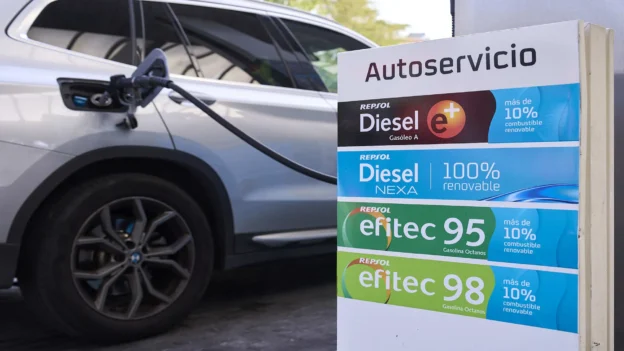Climate change is having a global impact, affecting all regions of the planet. Renewable fuels, emerge as one of the main alternatives to reduce the CO2 emissions in the transport sector. Moreover, by utilizing organic waste, CO2 emissions can be reduced by up to 90% compared to the fossil fuels they replace.
The energy transition toward more sustainable sources has driven the refining industry to adapt its processes to incorporate renewable feedstocks. However, this technological evolution brings significant challenges in equipping facilities to select metallurgy suitable for these new raw materials.
Repsol and its commitment to decarbonization
Repsol is a multi-energy company capable of meeting all customer energy needs, both at home and in mobility.
The company operates one of the most efficient refining systems in Europe, with the capacity to process over one million barrels of crude oil per day. A key element of its decarbonization strategy is the transformation of its six industrial complexes on the Iberian Peninsula into multi-energy hubs. These facilities are being adapted to process a wide range of feedstocks and waste materials to produce low-carbon products, such as 100% renewable fuels.
In line with its roadmap, Repsol has launched the first industrial-scale plant on the Iberian Peninsula dedicated to the production of these fuels in Cartagena. A second facility is scheduled to begin operations in Puertollano in 2026. The goal is to reach a production capacity of between 1.5 and 1.7 million tons by 2027, and up to 2.7 million tons by 2030.
Additionally, Repsol is planning the construction of the first European plant to convert urban waste into renewable methanol—a fuel that will contribute to the decarbonization of transport and the production of circular products—at its Tarragona industrial complex.
However, projects of this nature present challenges in corrosion and material selection, as outlined below.
Lack of standards
This is one of the main issues faced by engineers when selecting the most suitable materials for biofuel units. There are currently no international standards that address the damage mechanisms associated with these new feedstocks, Biofuel Processing: Challenges in Corrosion and Material Selection
nor are there standardized procedures for testing materials and coatings for use in such units. To address this challenge, various international organizations such as API, AMPP, and EFC are actively working to develop, in record time, standards that cover these new damage mechanisms.
Wide range of feedstocks
In general, the feedstocks processed in these renewable fuel production units can be highly diverse, ranging from vegetable oils such as palm, soybean, or rapeseed oil to animal fats or used cooking oils.
All these raw materials contain impurities not typically found in fossil fuels, which are associated with various corrosion mechanisms that are not yet fully understood. Contaminants may include nitrogen, sulfur, chloride, sodium, potassium, calcium, silicon, phosphorus, free fatty acids, and gums.
To ensure the integrity of the units, it is essential to implement a pretreatment process tailored to each type of impurity, located at the inlet of the biofuel production unit. It is also necessary to establish strict technical specifications that limit the levels of these impurities, along with thorough quality control of the feedstocks before processing.
The shift to new renewable feedstocks leads to the emergence of new damage mechanisms or an increase in corrosion in those already known from fossil fuel processing.
New corrosion mechanism
For example, the storage of raw materials for biofuel production presents additional challenges. Depending on the acidity of the feedstock (TAN) and the temperature, it may be necessary to coat carbon steel with appropriate industrial paints to protect the metallurgy.
Vegetable feedstocks contain fatty acids that generate complex and not yet fully understood corrosion mechanisms. Depending on temperature and concentration, the use of certain grades of austenitic stainless steels may not be recommended.
Another major challenge is chloride. Despite efforts to reduce its content in pretreatment units, the levels entering hydrotreatment units remain high. This, combined with the increased amount of water generated in these units, leads to greater corrosivity associated with this element. The same applies to CO2 corrosion, as the higher oxygen content in new feedstocks results in increased CO2 formation.
All these corrosion mechanisms are driving the increased use of special alloys such as duplex stainless steels and nickel-based alloys, the coating of some materials with paints, and the implementation of more advanced monitoring techniques to detect these new forms of corrosion.
In conclusion, renewable fuels represent one of the main alternatives for promptly reducing CO2 emissions from the transport sector and will drive the development of the Spanish and European industries. To achieve this in the most efficient way, a thorough review of material selection, corrosion mitigation strategies, and monitoring approaches is required, along with the standardization of both corrosion mechanisms and testing procedures for materials and coatings.
This article was developed by Repsol and published as part of the fifth edition of Inspenet Brief magazine August 2025, dedicated to technical content in the energy and industrial sector.

